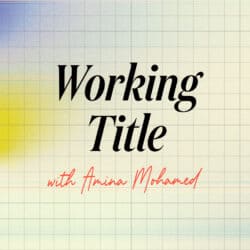“Endowments” are held by many Canadian charities. However, the source of these endowed funds and the nature of the legal conditions applicable to these endowments vary widely. More and more often charities that hold endowments are seeking input on how they can or should spend their endowments. The answer to whether they can only spend income (as defined by trust law) on their charitable purposes is both a trust and tax question.
Non—tax Considerations
In order to answer the “spend the endowment” question in an actual situation, we must engage in an analysis of the charity’s purposes as set out in its governing documents, any donor conditions imposed at the time of the gifts that constitute the endowment, and any general endowment policies of the charity. If the donor’s intentions were not set out clearly in a deed of gift or the like, we may also need to look for other evidence of the donor’s intent at the time of the gift. Fundraising material and donor correspondence are the two most common types of evidence. This analysis is sometimes complex, involving as it does difficult trust law and accounting questions. For some charities, it may also involve risk management considerations.
A detailed focus of the non-tax considerations is beyond the scope of this article. Rather, the balance of this column examines the tax aspects of this question.
Tax Considerations
As set out in the preceding paragraph, the “spend the endowment question” is not fundamentally a tax question. However, its answer often requires an understanding of the tax treatment of the particular gift and of the tax definition of enduring property. A proper understanding by lawyers creating endowments of the tax treatment of enduring property will help preserve flexibility when desired and make the answer of when the charity can spend the endowment question easier to answer in future.
The Income Tax Act (Canada) disbursement quota1 imposes an obligation on a registered charity to spend in each year 80% of the previous year’s receipted donations, other than receipts issued for gifts of “enduring property.” Gifts of enduring property are particularly valuable for charities because they are excused from this general 80% quota. Thus, what is enduring property? What conditions need to be imposed on a gift in order to meet the Act’s requirements, and what conditions are sometimes imposed unnecessarily?
Enduring property is defined in subsection 149.1(1) to include the following kinds of gifts:
• a gift received by way of bequest or inheritance (including gifts from an RRSP or TFSA received at death and deemed by subsections 118.1(5.2) or (5.3) to have been received as bequests);
• for a charitable organization, a gift received from another arm’s-length charity subject to a requirement that it be spent on charitable programming or the acquisition of capital property for use in charitable programming in the next five years;
• a gift received from other than another registered charity subject to a trust or direction that it or property substituted for it be held for at least 10 years (although the gift may be encroached on during the 10 year period to the extent of B.1 of the disbursement quota calculation); or
• enduring property transferred to the charity from another charity subject to the same conditions that made it enduring property.
Turning first to bequests, it is important to remember that all gifts on death are enduring property. There is no need for a charity to request that bequest donors place any conditions on their bequests in order for it to so qualify. While donors may wish to impose conditions for other reasons, these conditions are not necessary to ensure the enduring property characterisation of the bequest.
Given the summary nature of this article, we will not address five-year gifts to charitable organizations, other than to note that we have never been consulted on one.
Major gifts received by a charity during a donor’s lifetime are often structured subject to a 10-year hold period so that these gifts can qualify as enduring property and do not have to be spent in the year following the year of receipt. A focus on these requirements during the donor’s lifetime often results in similar restrictions being placed unnecessarily on gifts from the same donor on death. What a charity should remember is that to ensure a lifetime gift is enduring property, the particular gift must by its terms be held for 10 years. Charities seeking these gifts should remember that the capital of the gift need only be held for 10 years, not in perpetuity. The charity should also remember that not all gifts from a major donor must be subject to the same conditions. We sometimes see charities placing both lifetime and testamentary gifts from one donor received into an “endowment” fund that is held in perpetuity to produce income for charitable expenditure. While this is a possible approach, it is not necessary. The 10-year gift portions can be placed in separate funds and the capital spent as each 10 year condition is spent. Any bequest that the donor contributes to that “endowment” can be spent immediately or over time but with no restrictions if the documentation is clear and that is desired.
A 10-year gift of enduring property may also be substituted (i.e., the property be sold and the proceeds reinvested as portfolio decisions continue). One interesting way to substitute 10-year-gift property is to use it to purchase a capital asset for use in charitable programming.2 The Act only requires that the 10-year-gift property be held for 10 years, not that it be held to produce income. Thus 10-year-gift property could be sold and the proceeds used to purchase a building for the charity, although the building would then have to be kept for the remainder of the 10-year period.
As defined in the Act, a 10-year gift can provide for limited encroachment. The definition provides that the charity can encroach against the capital to the extent of the charity’s 3.5% disbursement quota calculation provided the gift documents so permit. Note that the encroachment against any one enduring property is limited by the charity’s whole 3.5% calculation. Thus, charities with larger endowments and that otherwise have a disbursement quota excess may encroach quite substantially against 10-year gifts in full accord with the Income Tax Act, but only if the 10-year gift documents so permit—and they now should.
There is some uncertainty about the consequence of encroaching on a 10-year enduringproperty gift other than as permitted by the definition. First, we must remember that if a gift document permits encroachment other than as discussed above (even if to pay administrative fees), CRA’s view is that it is not enduring property at all.3 If a gift condition is structured as a trust, then it is arguably not possible to amend it subsequently (even with donor consent) to permit encroachment, without prior court approval (although the rule in Saunders v. Vautier might apply in some circumstances). However, it may be possible as a matter of civil law to amend a donor direction with donor consent.
What is the tax consequence of such a “permitted” encroachment? One view is that such an encroachment is not consistent with the enduring property regime.4 However, one CRA comment on this question appears to leave open the possibility of such a transaction.5 Thus, charities may wish, after considering the legal analysis and risk profile, issues to consider further encroachment (bearing in mind that any encroachment will itself give rise to a disbursement obligation).
Conclusion
Charities with endowments should be careful to work with the tax rules in order to maximize flexibility. The enduring property rules permit considerable encroachment, an expenditure on their face.
Notes
1 For further description of the disbursement quota generally and on enduring property specifically, see A. Drache, R. Hayhoe, and D. Stevens, Charities Taxation: Policy and Practice (Toronto: Thomson-Carswell: looseleaf, 2009) at Chapter 8 and M.E. Hoffstein and A. Parachin, “Disbursement Quotas: What They Are and How to Comply” paper presented at the 2nd National Symposium on Charity Law “What’s New and What’s Coming,” Canadian Bar Association (Toronto: Canadian Bar Association, 2004). For a more detailed criticism of the rules, see Adam Parachin, “Split Receipting and Inter-Charity Gifts” (2008), 27 E.T.P.J. 197.
2 Canada Revenue Agency Charities and Giving Notice, “10-year gift,”January 12, 2010.
3 CRA Charities Directorate, “Treatment of enduring property for purposes of the disbursement quota,” Questions and Answers Relating to CSP-E10, April 20, 2009.
4 See Drache, Hayhoe, and Stevens, supra note 2 at 8-9 where we have taken this approach. CRA also takes this approach generally (e.g., CRA, “10 year gift” supra note 3).
5 CRA, “Questions and Answers Relating to CSP-E10,” supra note 4 at Question 9.
Robert Hayhoe is a partner at Miller Thomson LLP and National Chair of its Charities and Not-for-Profit Group: www.millerthomson.com. Email: rhayhoe@millerthomson.com


